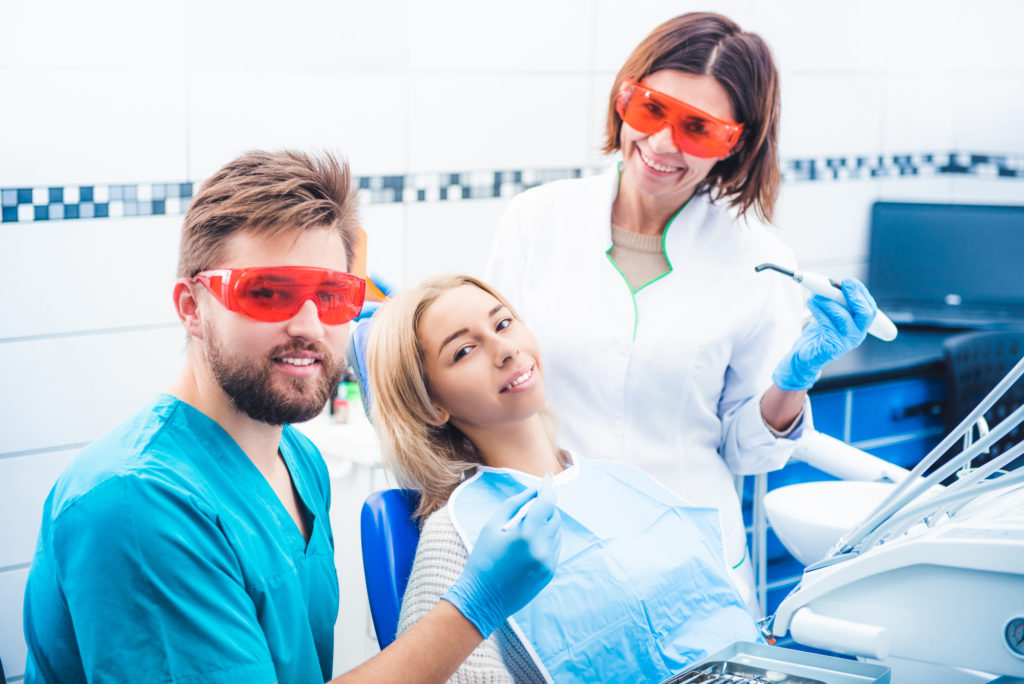What’s The Best Way to Floss
We all know we should floss, but it can be tough. Part of this is because flossing can feel like an extra task in an already busy day, but it...

Drills and needles are becoming a thing of the past in the dentist’s office. Laser dentistry is now a popular option for a long list of dental treatments. Recently, the technology has become more advanced and accessible. And the best part? It can often be done without anesthesia or the sound and vibration of a drill.
Lasers have been used in dental procedures for just over three decades and are approved by the FDA to treat hard and soft tissue. The technology involves focusing light into a highly concentrated beam that has the capability to affect both hard and soft tissue. Advanced computer software guides the laser for precise and painless results. As an added benefit, lasers are free from the loud noise and vibrations associated with drills. Laser dentistry offers an entirely new and more comfortable experience at the dentist.
There are many advantages to the use of laser technology in various procedures. One of the most familiar procedures that can benefit from laser technology is cavity treatment. Laser treatment can make cavity removal more pleasant and precise than traditional treatment.
With traditional fillings, a local anesthetic is required to numb the area. This adds time to your appointment and leaves you with an unpleasant numb sensation for hours following your visit. Novocain is the most common local anesthetic. This anesthetic is injected into the gums surrounding the treatment area. While designed to numb the area and dull pain, the injection itself can be rather uncomfortable, and multiple injections may be required to sufficiently numb the area.
For most patients, anesthetic shots are not required for laser cavity treatment. The procedure is virtually painless. Lasers use a highly concentrated stream of light to target the cavity and prepare it for a filling. Unlike drills, there is no vibration or noise, which can add to discomfort during the procedure.
Lasers can significantly cut down on visit times and the need for multiple visits. As mentioned above, a laser procedure often does not require an anesthetic. Local anesthetics can take several minutes to work, and multiple injections may be required until a more complete numbing effect can be attained. This can add a significant amount of time to your appointment. In addition, the actual procedure is quicker with a laser than with a traditional drill. Cavity treatment often takes just minutes.
Lasers detect a cavity early and can kill the bacteria inside, halting decay. Lasers prepare the cavity for a filling and, because of the precision of the cut, allow fillings to adhere to the tooth better than traditional methods.
Laser dentistry is an excellent option for patients with dental anxiety and for kids. The absence of pain and less time required in the dental chair can significantly decrease dental anxiety. In addition, laser treatment is quiet. The noise and vibration of the drill often trigger dental anxiety or increase unease during procedures. Because the laser is quiet, patients find it much easier to remain relaxed during treatment. Many say it is a completely different experience from traditional treatments.
Hoffman Dental Care uses the Solea laser. Unlike some other laser systems, it is appropriate for both hard and soft tissue procedures. This means that Solea laser technology can treat a long list of issues in addition to cavities. Treatments for teeth, gums, and even lip and tongue ties are possible with Solea. The Solea laser system is safe, effective, and approved by the FDA.
If you are searching for a more comfortable option for cavities or another dental issue, contact us to explore whether laser dentistry is a good choice for you.